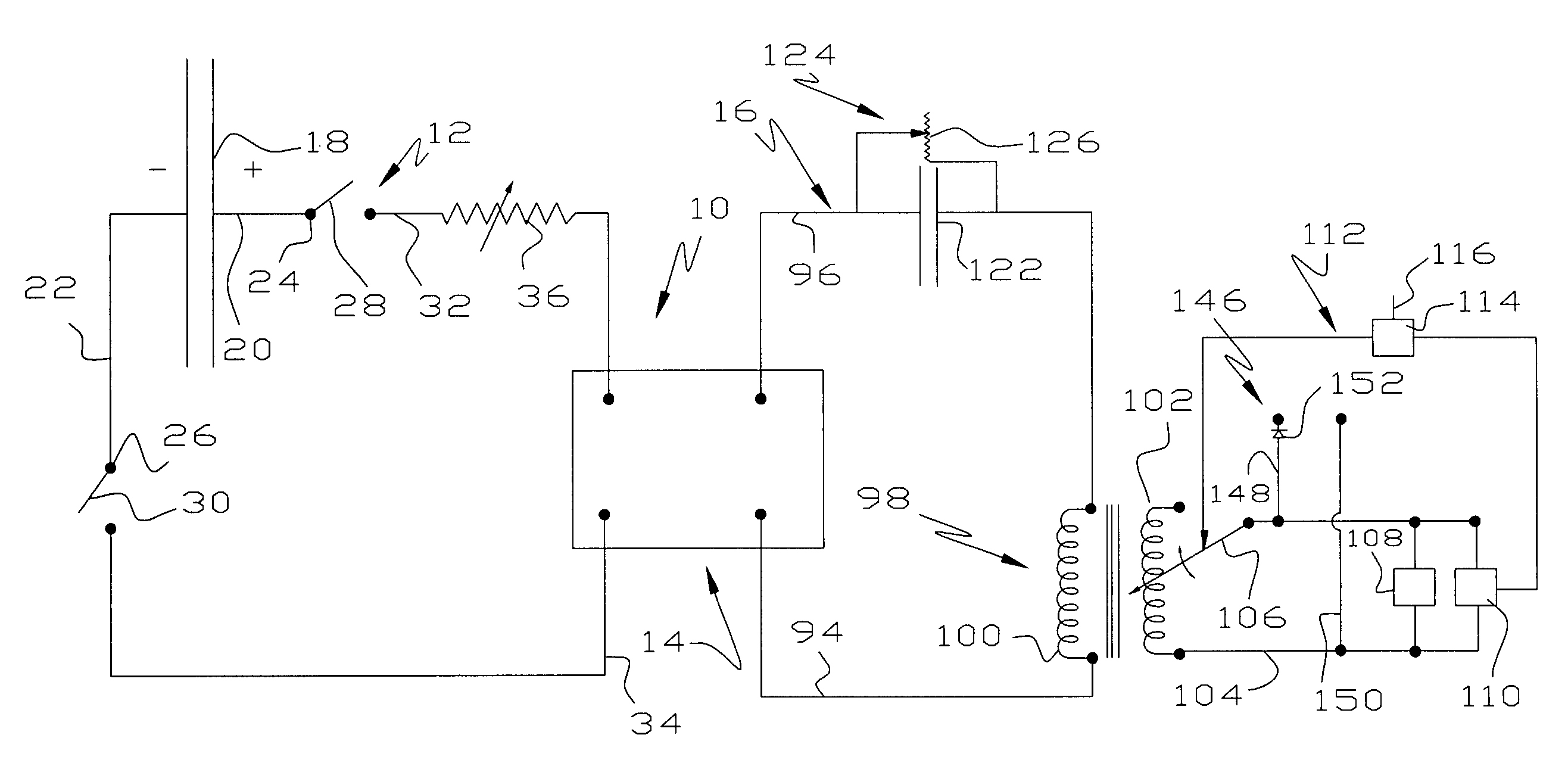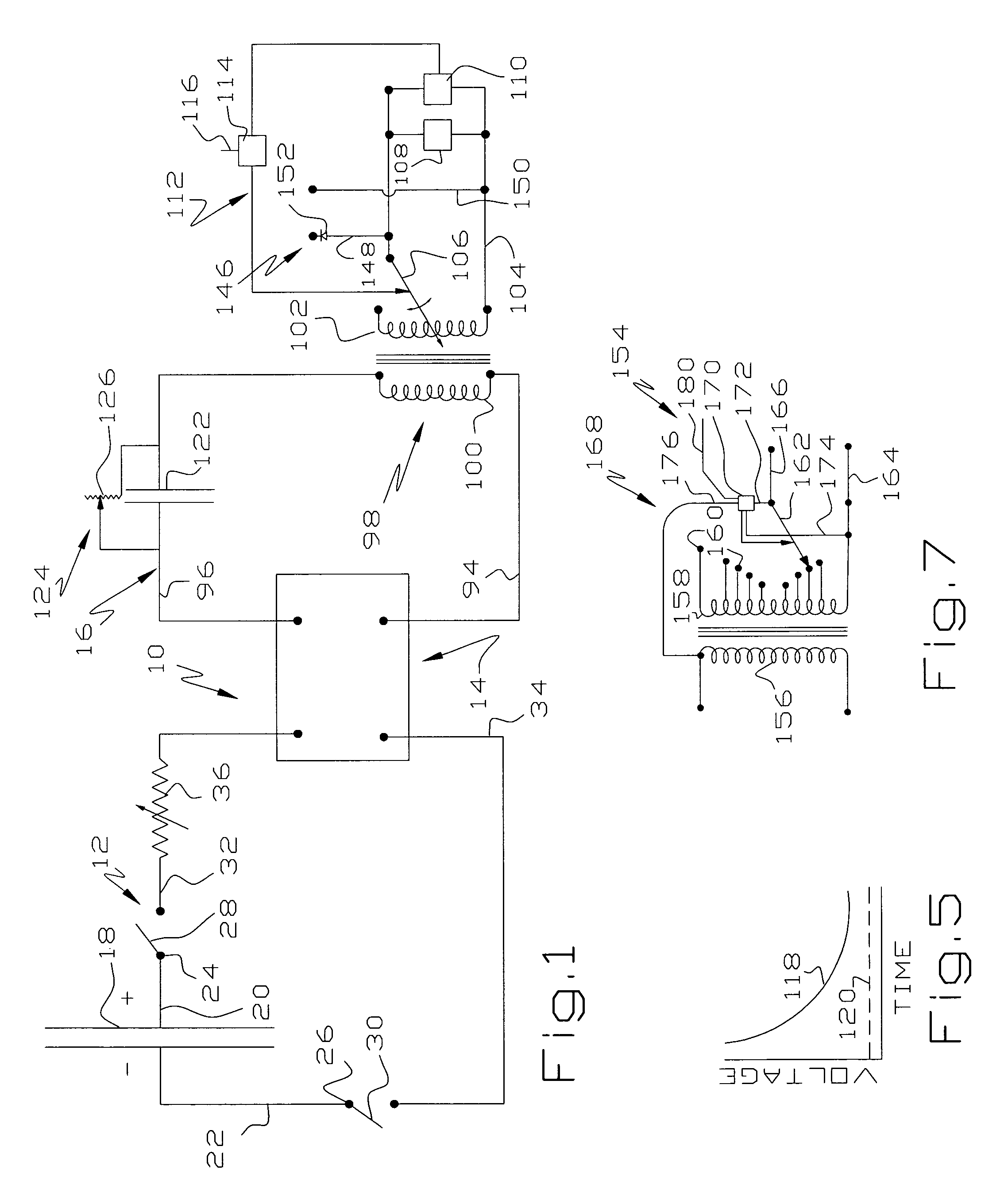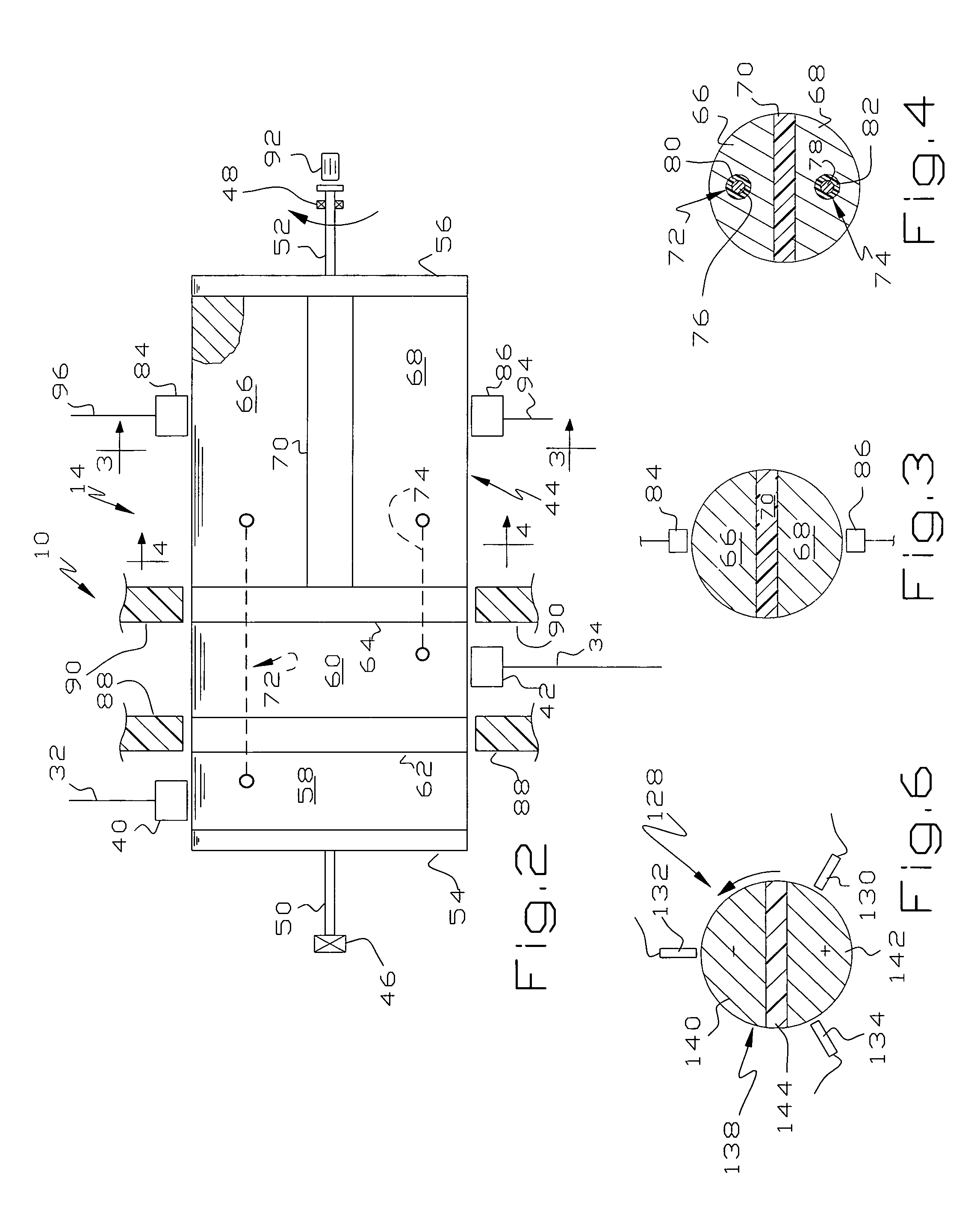Capacitor based energy storage
a capacitor and energy storage technology, applied in the direction of dynamo-electric converter control, apparatus with intermediate ac conversion, instruments, etc., can solve the problems of low efficiency, low efficiency, and low discharge rate of current electrically driven vehicles, so as to prolong the time the capacitor can drive the work producing device and control the capacitor discharge.
- Summary
- Abstract
- Description
- Claims
- Application Information
AI Technical Summary
Benefits of technology
Problems solved by technology
Method used
Image
Examples
Embodiment Construction
[0021]Referring to FIG. 1, an energy storage device or circuit 10 comprises, as major components, a capacitor circuit 12, an inverter 14 having an input in circuit with the circuit 12 and an output in circuit with a transformer circuit 16.
[0022]The capacitor circuit 12 comprises one or more capacitors or capacitor packs 18 of suitable size connected to leads 20, 22 which connect to a terminal 24, 26 of switches 28, 30 so the capacitor 18 may be isolated during recharging. High Farad capacitors are not currently in great demand and the capacitors available commercially are low voltage, meaning they store little power. Conversely, high voltage capacitors that are now commercially available are used to correct power factors and have low Farad design values. However, the construction of high voltage, high Farad capacitors is well within the skill of the art.
[0023]The other side of the switches 28, 30 connect to leads 32, 34 one of which provides a varistor 36 therein. The leads 32, 34 t...
PUM
 Login to View More
Login to View More Abstract
Description
Claims
Application Information
 Login to View More
Login to View More - R&D
- Intellectual Property
- Life Sciences
- Materials
- Tech Scout
- Unparalleled Data Quality
- Higher Quality Content
- 60% Fewer Hallucinations
Browse by: Latest US Patents, China's latest patents, Technical Efficacy Thesaurus, Application Domain, Technology Topic, Popular Technical Reports.
© 2025 PatSnap. All rights reserved.Legal|Privacy policy|Modern Slavery Act Transparency Statement|Sitemap|About US| Contact US: help@patsnap.com



